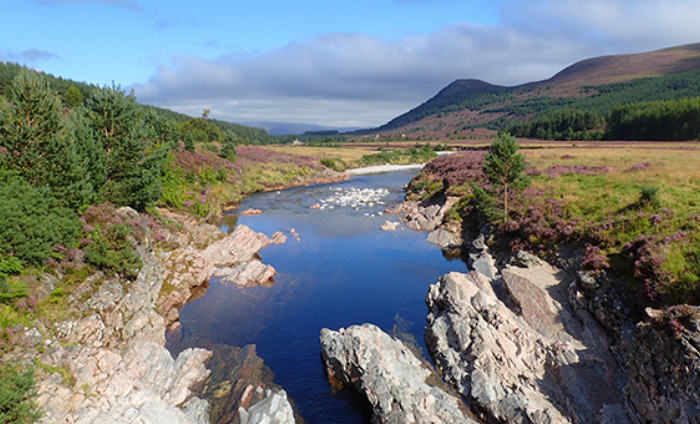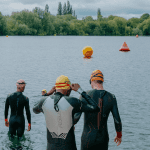
Swimming wild: a guide to river pool swimming
Alice Goodridge shares her top tips for exploring river pools and how to stay safe
Basking on the sun-warmed rocks I close my eyes for a moment and listen to the gentle rush of the River Feshie at my feet. Completely sheltered from the chilly Highland breeze, my rocky perch is a perfect sun trap. Sliding back into the sparkling water I marvel at the patterns of light dancing across the rocky riverbed. I swim a few stokes upstream before turning and floating gently back down to my shallow entry point. A perfect river pool dip!
Living in the Cairngorms National Park I am lucky to have many incredible freshwater swimming options on my doorstep. The area is crisscrossed with a vast network of upland streams and rivers and I love exploring their stunning gorges, hidden waterfalls and tranquil river pools.
All these features of fluvial erosion occur in the youthful stage of a rivers development when the water flows fast over rocky terrain. River pools are the most suitable for swimming: calm stretches of water where the river bed is deeper than average and the flow is slower than average.
When water levels are low these calm pools are wonderful places to explore (and play!) Sliding off rocks, swimming upstream against the current, swooshing downstream and finding places where it is deep enough to jump and dive. Swimming underwater allows me to see the amazing patterns in the rocks, like circular potholes caused by eddies and abrasive turbulent water flow.
It is really important to understand the way the river current behaves on a day when the conditions are good and the water level is low. Upland river catchments respond rapidly to rainfall, leading to high flow rates at peak times. Tranquil river pools can quickly turn into raging torrents with immense power. Whatever the character of a river, when the flow is high it presents a range of significant dangers to swimmers.
Tips for river pool swimming
If exploring a new river pool make sure you do so when water levels are at their lowest. You can find useful river level data on the SEPA (Scotland) or UK Flood Warning Information Service (England & Wales) websites. If the flow looks a bit too fast or you are unsure, do not swim.
Always make sure you have an exit plan before you get in. If possible get in and out where the water runs to shallow and swim upstream before you go downstream. This way if you are pushed any further downstream you will get beached and it will still be easy to get out.
If you do want to jump or dive in, it is essential to get into the water first and carefully test the depth of the area and ensure it is completely clear of hazards. Never assume that because somewhere is known as a local diving spot that it will be safe on the day you decide to go. There may not sufficient depth, or rocks may have moved into what was previously a safe entry spot.
Safety first
Keep yourself safe by following these key points.
1. When exploring a new river pool make sure you do so when water levels are at their lowest.
2. Make sure you have an exit plan before you get in.
3. Get in and out where the water runs to shallow.
4. Always carefully check for hazards and test the depth of the area before jumping or diving.








